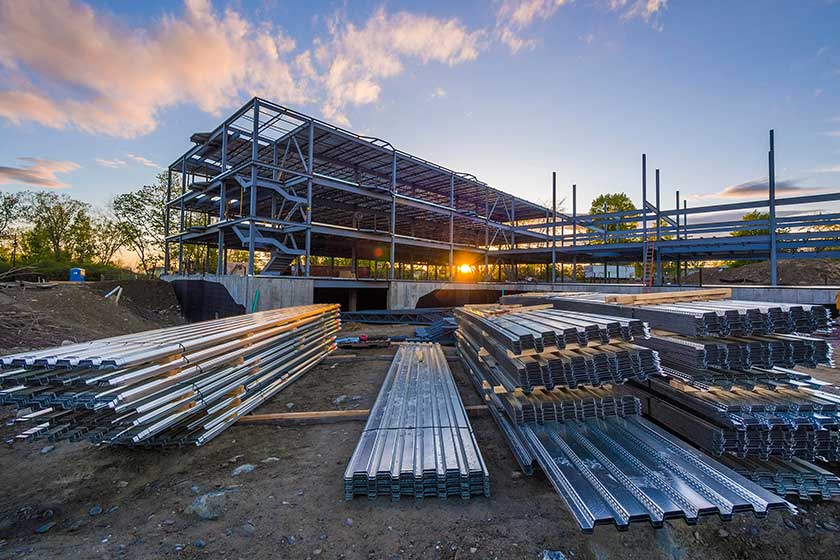Are Fire Alarm Systems Required In New Construction? Understanding NFPA Regulations

Are fire alarm systems required in new construction projects? Well, the answer is that it varies. Depending on what occupancy type your new building falls under, the NFPA has different requirements outlined.
Understanding the different occupancy types and NFPA guidelines for new construction projects is vital for engineers, architects, and contractors in ensuring the safety of occupants and compliance with regulations. Read on to learn more.
Specific NFPA New Construction Requirements for Occupancy Group A: Assembly Occupancies
New constructions that fall under occupancy Group A, meaning ‘Assembly’ occupancies, encompass a diverse array of venues where people gather for recreation, entertainment, or worship. For assembly occupancies, such as theaters, concert halls, and religious venues, NFPA guidelines mandate stringent fire alarm system provisions.
If the occupancy load exceeds a designated threshold, typically 300 or more individuals, the installation of manual or automatic fire alarm systems becomes mandatory.
Moreover, the layout and characteristics of assembly spaces influence fire alarm requirements. Venues with stage areas, elevated seating, or complex egress routes may necessitate additional fire alarm features to effectively alert occupants in case of a fire emergency.
NFPA standards emphasize the importance of early detection and notification in assembly occupancies to facilitate prompt evacuation and mitigate potential hazards. Compliance with these NFPA standards not only guarantees legal observance but, more crucially, safeguards the lives and well-being of the thousands upon thousands of individuals gathered in these venues.
NFPA New Construction Requirements for Occupancy Group B: Office Buildings and Service Providers
Constructions of new buildings that fall under occupancy Group B, comprising office buildings and service providers, must adhere to distinct NFPA regulations to ensure fire safety within these commercial spaces. For office buildings and service providers with Group B classification, NFPA standards mandate the installation of manual fire alarm systems or automatic sprinkler and notification systems under certain conditions.
Specifically, if the combined occupant load across all floors exceeds 500 individuals or if the occupant load surpasses 100 persons above or below the lowest level of exit discharge, a fire alarm system becomes obligatory. This is especially important as hundreds of people will be coming and going in Group B buildings.
NFPA New Construction Requirements for Occupancy Group E: Educational Facilities
Occupancy Group E pertains to educational facilities, including schools and daycare centers, and necessitates adherence to specific NFPA regulations to safeguard the well-being of students, faculty, and staff.
For the building of new educational facilities falling under the Group E classification, NFPA standards mandate the installation of smoke detectors, manual pull stations, monitor modules, and control relay modules, regardless of maximum occupancy. This comprehensive approach to fire protection aims to promptly detect and respond to potential fire hazards.
Additionally, Group E buildings must meet specific criteria related to occupancy and building characteristics. Typically, educational facilities serving students up to the 12th grade and accommodating at least five individuals simultaneously fall within this occupancy group. Moreover, facilities with two or fewer children under the age of two may also be classified under Group E.
NFPA New Construction Requirements for Occupancy Group F: Factory Industrial Facilities
Occupancy Group F encompasses factory industrial facilities, including manufacturing or processing plants. For new Group F buildings, NFPA standards dictate the installation of carbon monoxide detectors, manual pull stations, monitor modules, and control relay modules.
Moreover, NFPA requirements for new Group F facilities are contingent upon factors such as maximum occupancy and the presence of hazardous materials. Buildings with a maximum occupancy of 100 or more individuals or those with at least 25 occupants on floors above or below the lowest building exit must adhere to these regulations.
As well, facilities engaged in the production of various goods, such as musical instruments, furniture, clothing, or paper products, fall within this occupancy group.
NFPA New Construction Requirements for Occupancy Group H: High-Hazard Manufacturing Facilities
Occupancy Group H includes high-hazard manufacturing facilities, where the production involves the use of dangerous materials such as oxidizers, cryogenic fluids, corrosive substances, as well as flammable solids or gases.
Specifically, NFPA standards necessitate compliance with subgroup H-5 conditions, which cover production areas utilizing hazardous materials and plants manufacturing organic coatings, irrespective of their size.
For new Group H buildings, NFPA mandates the installation of carbon monoxide detectors, manual pull stations, monitor modules, and control relay modules.
NFPA New Construction Requirements for Occupancy Group I: Institutional Facilities
Occupancy Group I encompasses institutional facilities, including healthcare institutions, daycare centers, and correctional facilities. These buildings cater to vulnerable populations, making fire safety paramount.
NFPA standards mandate comprehensive fire alarm systems for new Group I buildings, irrespective of their occupancy. Alarm communication systems, manual pull stations, notification devices, carbon monoxide detectors, monitor modules, and control relay modules are essential components of these systems.
Healthcare facilities, including assisted living facilities, nursing homes, and psychiatric hospitals, must meet these stringent fire safety requirements. Similarly, correctional facilities, such as jails and prisons, must follow suit to facilitate orderly evacuation procedures. Daycare centers, responsible for the care of young children, must prioritize fire safety at all times.
NFPA New Construction Requirements for Occupancy Group M: Retail Stores
Occupancy Group M comprises retail stores, which are vital components of commercial infrastructure. These establishments serve diverse customer needs, necessitating stringent fire safety measures to protect occupants and property.
Depending on the size and occupancy load, new retail facilities must install smoke detectors, manual pull stations, control relay modules, and notification appliances as part of their fire alarm systems. Retail stores with a combined occupancy load of 500 or more individuals across all floors, or those with occupancy loads exceeding 100 persons above or below the lowest level of exit discharge, are mandated to implement comprehensive fire alarm systems.
NFPA New Construction Requirements for Occupancy Group R: Residential Facilities
Occupancy Group R covers various residential facilities, including hotels, motels, apartments, and timeshare properties. These housing and lodging accommodations must install control relay modules, smoke detectors, and, in the case of high-rise structures, a two-way communication system to boost fire detection and notification capabilities.
Buildings with a significant number of occupants or multiple levels must adhere to more stringent fire alarm system requirements to safeguard residents and guests.
Meeting NFPA Regulations with the Help of Fire Safety Alarms, Inc.
Throughout this guide, we’ve explored the various NFPA regulations governing fire alarm systems across different occupancy groups, ranging from residential to commercial establishments. Being familiar with these NFPA requirements for fire alarm systems in new buildings is paramount to ensuring the safety and well-being of all occupants, especially vulnerable populations.
If you require some help with meeting NFPA regulations in your new building, don’t hesitate to reach out to Fire Safety Alarms, Inc. today.
Our fire safety business boasts 45 years of rich experience ever since it was established by our esteemed New York Fire Department Chief Officers in the 1970s. No matter the type of fire alarm services or emergency management and services you need assistance with, we’ve got you and your building covered.
